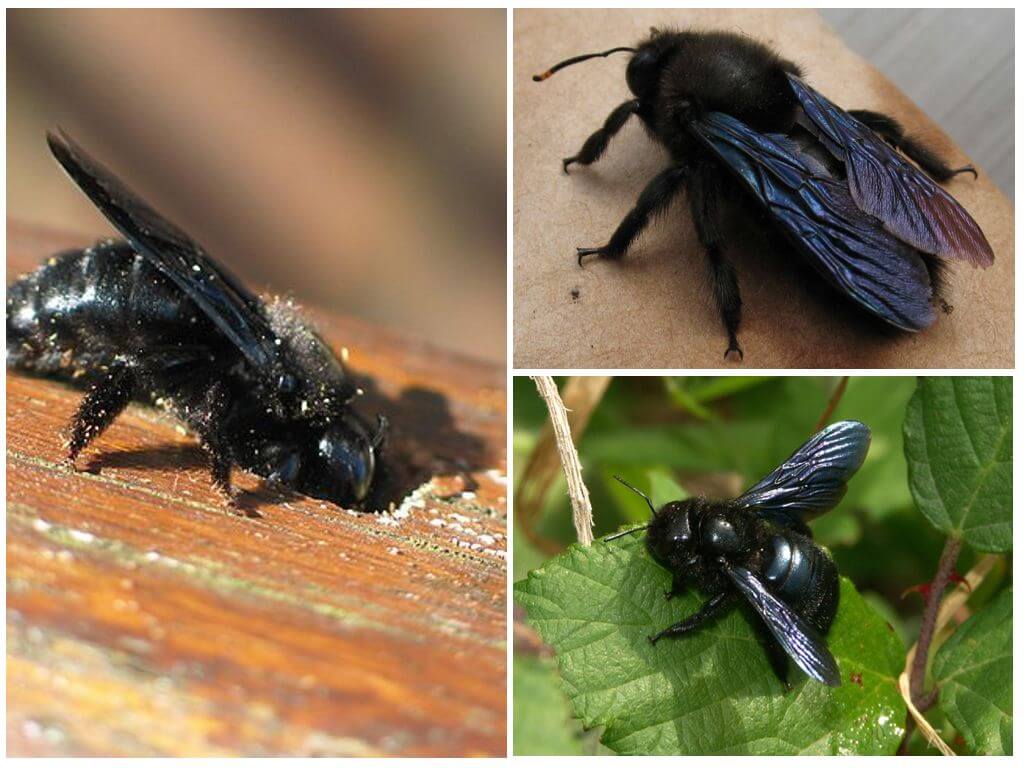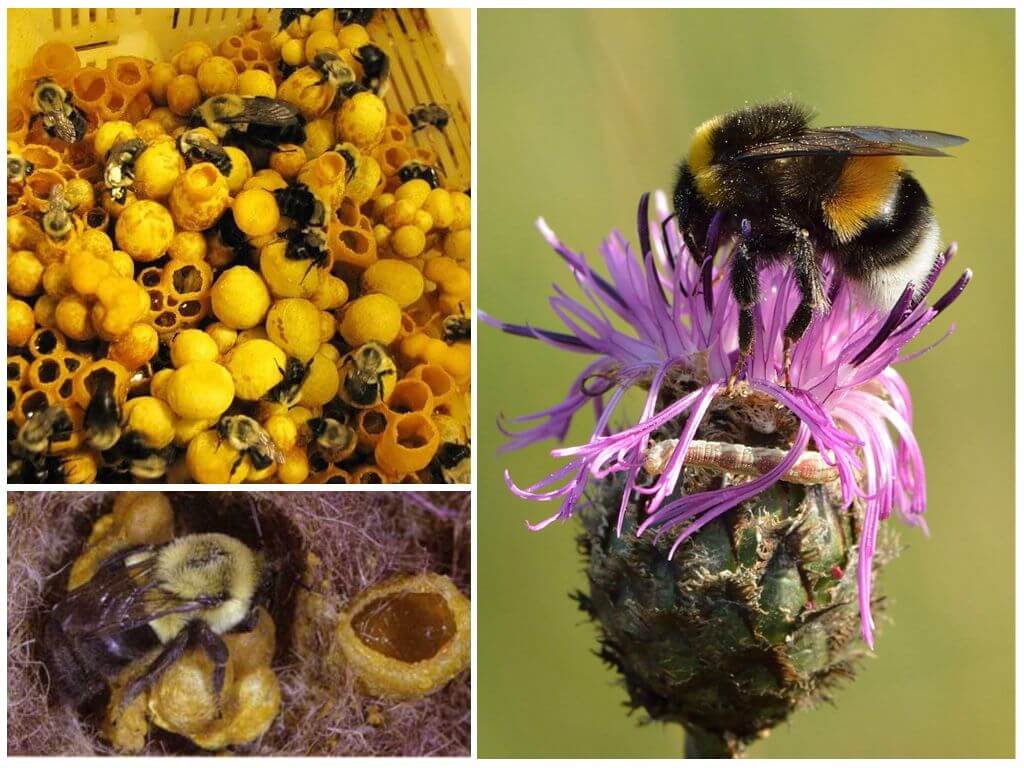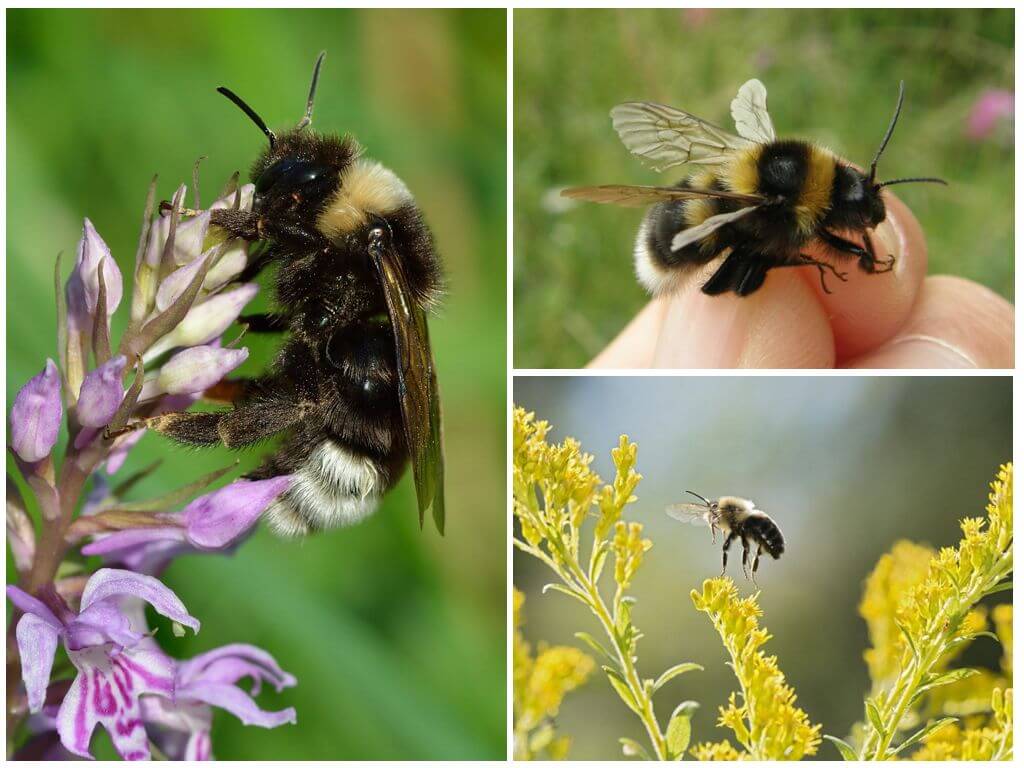
Earth bumblebee is a representative of the bee family. It is different from other species. bumblebees quite large sizes. Its color is represented by a combination of black and red hairs with white spots. The insect is widespread due to its ability to efficiently pollinate plants, dropping pollen from itself during its vibrating flight. This fact did not go unnoticed by scientists and specialists who decided to develop a technology for breeding this type of bumblebee on an industrial scale.
Appearance and dimensions
The largest representative of the bumblebee family is the uterus. It can reach 27 mm in length. Working females on average grow to 12-17 mm. The largest males grow up to 22 mm, and the average size of their bodies is 11-22 mm in length.
The color of females and males do not differ. In the photo of the ground bumblebee, you can see that black hair with a red band dominates on the back. The abdomen of the insect combines black, red and white bandages. The chest is black, like his body itself, limbs and long antennae.
Spread
Earth bumblebee prefers to build nests in the ground, choosing for this the former burrows of rodents, empty cavities in the soil. Unlike many of its brethren, settled in the middle latitudes of Eurasia and even in the northern parts of the Far East, the earthen representative of the bee family is a heat-loving insect.
Its main habitats:
- southern part of Europe;
- Caucasus;
- Front and Central Asia;
- southern regions of the Urals and Western Siberia;
- northwestern part of Africa.
Arthropods often choose forest-steppe zones for habitat and collection of nectar. In recent years, due to the widespread use of this insect in agriculture, its range has expanded significantly to the east of Russia.
Agricultural application
Bumblebee began to be bred at the end of the last century. Specialists in the agricultural industry have developed a technology for the use of these insects in greenhouses for growing vegetables and berries. He copes well with pollination of such significant plants in the rural industry:
- Tomatoes
- eggplant;
- cross-pollinated cucumbers;
- bell pepper;
- wild strawberries;
- blueberry;
- cranberries and others.
Insects are bred in greenhouses in special small hives. The uterus cares for eggs and larvae, and working females actively collect nectar from greenhouse plants. During its flight, the bumblebee creates strong vibrations by the body, which contributes to the effective distribution of pollen throughout the beds.
On a note!
Earth bumblebee has a relatively short proboscis, which is not able to get nectar from the deep inflorescences of meadow clover. Using it to pollinate this plant is ineffective.
Families of earthen insects live in greenhouses for about 2 months. During this period, shaggy workers manage to pollinate almost 100% of greenhouse plants. On average, one hive has 400-500 working individuals.



